via web
- StoryAn Electric Revolution: How All Signs Point To A Massive Ebike Influx By 2020
Mountain View, California, United States
With so much electric motorcycle news over the last year, we take some time to unpack what’s happened, and where things are headed in the electric two-wheeled segment over the next year or two.
Over the last two-decades electric motorcycles have appeared more and more across the two-wheeled landscape. Though 2018 was a pivotal year for the emerging electric moto-sector, hinting at the start of a revolution that doesn’t appear to be too far off. Whether or not you can hear them approaching, a wave of electric motorcycles are on their way.
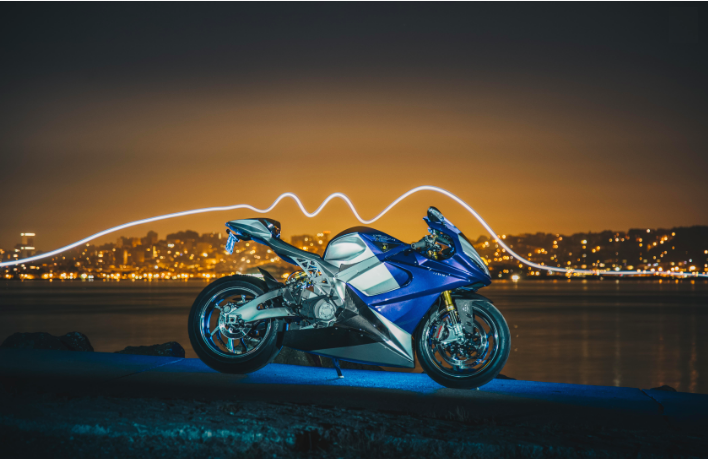
Electric Motorcycles Are The Future
The Writing On The Wall
Within the last year a number of large announcements were made from big-name companies that more than hint at an increasingly electric motorcycling future. Let’s gloss over just a few…
-MV Agusta revealed it would be introducing an electric division under the revived “Cagiva” moniker
-KTM/Husqvarna introduced a number of electric off-road models
-Ural put together an electric prototype that’s likely headed to production
-Kymco pulled the cover off the SuperNEX electric sportbike concept
-Royal Enfield said it would be getting in on the EV action in the not-so-distant future with an electric bullet.
-Harley announced its electric Livewire model would hit production in 2019 before rolling into dealerships later the same year
-More recently Ducati CEO, Claudio Dominicali stated the Bologna-based brand would introduce a fully electric bike within the next few model years
-Vespa introduced its first ever-fully-electric scooter model
-Lightning is poised to release its second, more affordable model in the near future after recently putting the LS-218 (cover photo) into production
-Zero is less than a week from the debut of its new SR/F model as of the time of writing
-Though it may have gone under, Cummins Engine Company purchased Brammo from Polaris, so we assume the billion-dollar-outfit plans on doing something with said acquisition.
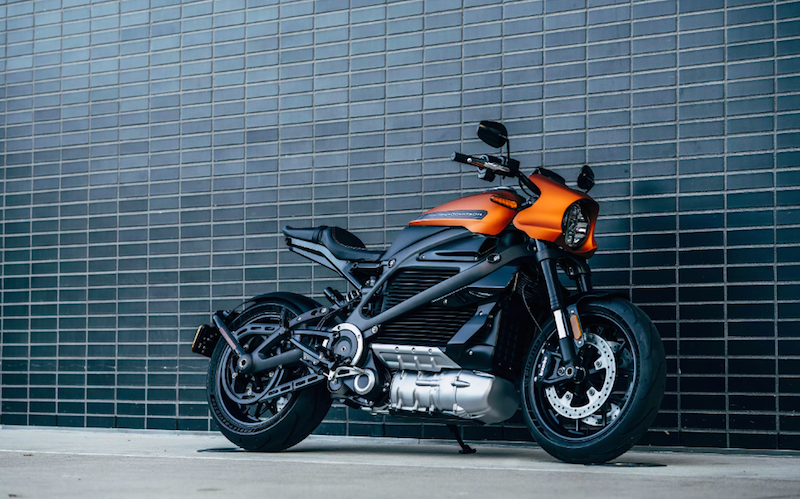
It should be interesting to see an ebike from a big-name outfit like Harley, though the Livewire's $30K price will probably limit sales
There were also a bevy of startups and smaller outfits popping up and/or releasing new electric bikes. Let’s look at a few…
-Novus introduced its top-shelf carbon-framed ebike
-RMK debuted its hubless rear-wheeled E2
-Cake debuted an electric bike/mountain bike hybrid and is poised to release a road-going version
-Kalashnikov (makers of the AK47) debuted a couple ebike prototypes
-Axiis unveiled the awesome Liion electric supermoto
-Sur-Ron pulled the cover off a new, longer-range electric model
-Saroléa debuted the gorgeous Manx7 electric café racer
-Yamaha dropped the Nazo ebike concept
-Zapp released an interesting, minimalistic escooter
-Tarform introduced an ebike concept
-California’s Fly Flee has debuted a number of customizable café and scrambler style ebikes
-Vigo was another player to introduce an electric concept
-China’s Denzel electric café bikes went from digital concepts to IRL protobikes slated for the US market
-Veitis debuted its fascinating V-Twin style electric “E-Twin” powered bobber concept
-OttoBike showed off its MCR2 ebike
-Australia’s first ebike marquee, Savic Motorcycles, debut its C-40, electric café racer which is also slated for production in its home market
-Big Rep’s NowLab made a thoroughly impressive 3D-printed motorcycle
-Established budget bike purveyor Super Soco debuted the new TC Max
-Arc created its ultra-high-end Vector concept project, which is backed by several bigwigs from Jaguar
-Confederate rebranded and is now Curtiss, which will only sell electric bikes, several of which they have debuted such as the Zeus.
-And finally, this week NXT unveiled its new electric model, the “RAGE”
**Hurdles Cleared and Hurdles on the Horizon **
There have traditionally been a myriad of limitations and drawbacks associated with electric motorcycles, which have largely prevented the majority of the market from embracing the electron and proton-powered mode of transport. Most riders have cited ebikes limited range and long charge-times (and waits), though these setbacks are quickly being resolved thanks to current offerings boasting 200-mile+ ranges and sub-one-hour recharge times. In 2018 several large brands also outlined major urban infrastructure plans for charging (and swappable battery) stations for electric motorcycles and scooters.
This trend is practically guaranteed to continue, especially with several major players like Honda and BMW having untold amounts invested in electric powertrain research and development thanks to their primary auto sectors. Before (at least temporarily) being forced to close its doors in 2018, Alta held the honor of having the battery with the highest energy density on the market — even better than Tesla’s latest wares. The rapid evolution of electric motorcycle battery and motor technologies will make ebikes an increasingly attractive offering over the next few years. It won’t be long until electric bikes boast longer ranges than baggers and tourers even.
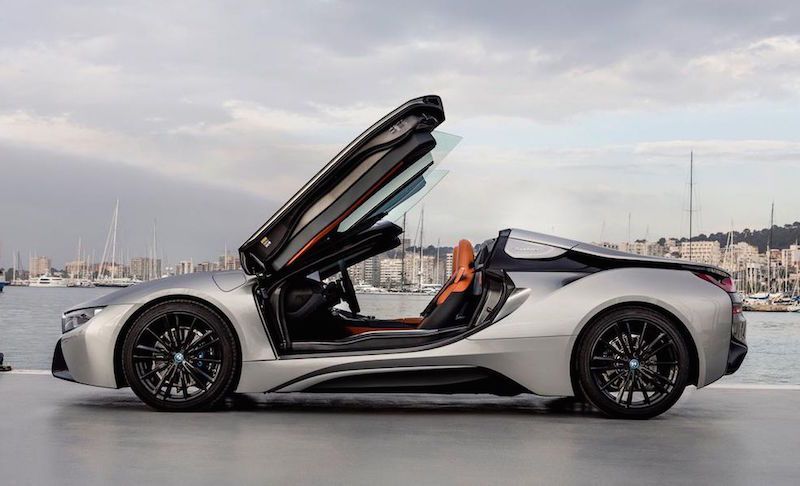
Companies like Honda and BMW have poured a lot of money into R&D for electric powertrains
But Can They Go Fast?
A decade ago performance was another often-cited criticism of electric bikes. Despite Mike Corbin (of Corbin Seats fame) breaking the 200mph barrier on his electric motorcycle in the 1970s, it wasn’t until much more recently that e-powered two-wheelers were capable of going toe-to-toe with their gas-powered counterparts.
Fortunately outfits like Mission Motorcycles and Lightning stepped up to show what an electric sportbike is capable of, with the latter company actual holding the distinguishment of making the fastest production motorcycle in the world for a time. Alta was another outfit that in recent years impressed the motorcycling world with its electric hardware, entering its Redshift model into professional-level competitions and proving ebikes have a place at the top-level.
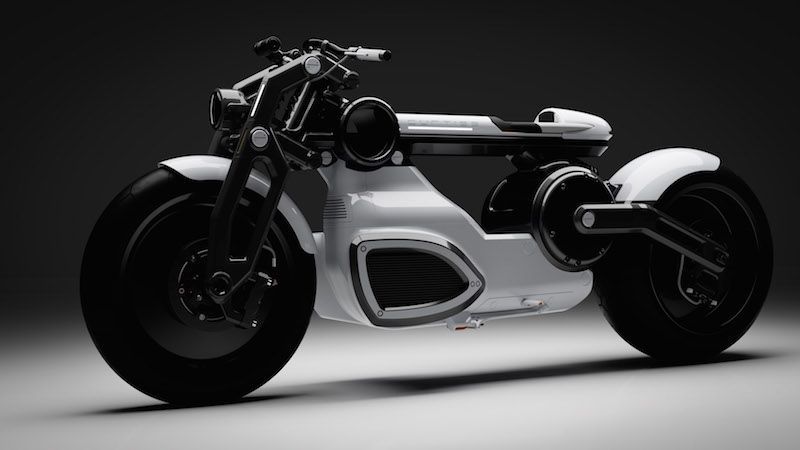
Curtiss debuted several electric prototypes in both bobber and cafe racer style (cafe seen here)
E-Grand Prix
Italy’s Energica will have the chance to put its electric motorcycles on the main stage for the first time in 2019 as the sole sponsor for MotoGP’s first electric class with the Moto-E series. The new series will almost certainly provide invaluable marketing for the electric marquee as the motorcycling public becomes increasingly aware of modern electric bikes’ comparability to internal combustion engine-powered mounts.
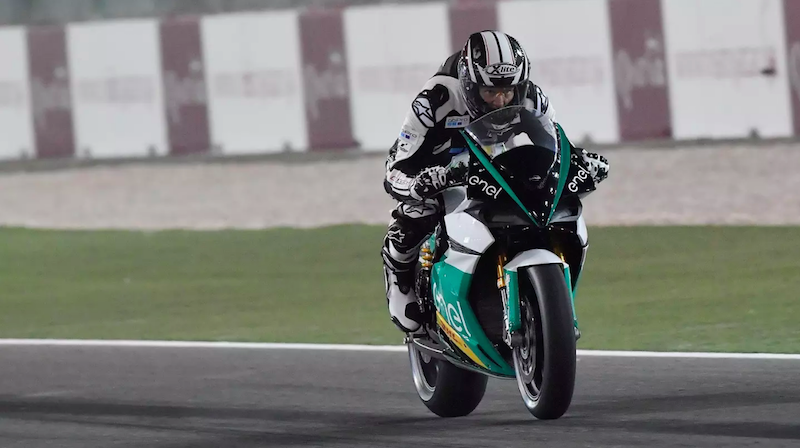
The Moto-E series will provide a stellar platform to exposure the public to ebikes
The Fun Factor
I personally find the strongest selling point of electric motorcycles to be their insane torque. Unlike a gas-powered motorcycles, ebikes don’t have any powerband, aka, there’s no sweet-spot in the rev-range where you’ll find the most power. With an electric powertrain, its full torque is fully on tap at any given moment, just twist the throttle and it’s there. Companies have actually had to limit power at lower speeds to prevent wheel-spins, jerky throttles, and general accidental buffoonery. For example, Zero greatly limits its bikes’ torque until after 15mph.
While I’ll never cease to be amazed by 200hp superbikes, torque is really where the fun is at, especially on the street. So the fact many electric bikes can offer nearly double the torque of the gas-powered bikes they’d be roughly comparable to in cc’s should start to convey how much of hooligan machines ebikes truly are. Moto-E should serve as a fantastic reminder to the world that these things can seriously go.
Dollars and Sense
Another factor that has been largely problematic for the electric moto sector is pricing. With current ranges — that will almost certainly be markedly improved in the very near future — most ebikes are marketed as commuters, and consequently people typically aren’t interested in forking over exorbitant amounts of money on commuters.
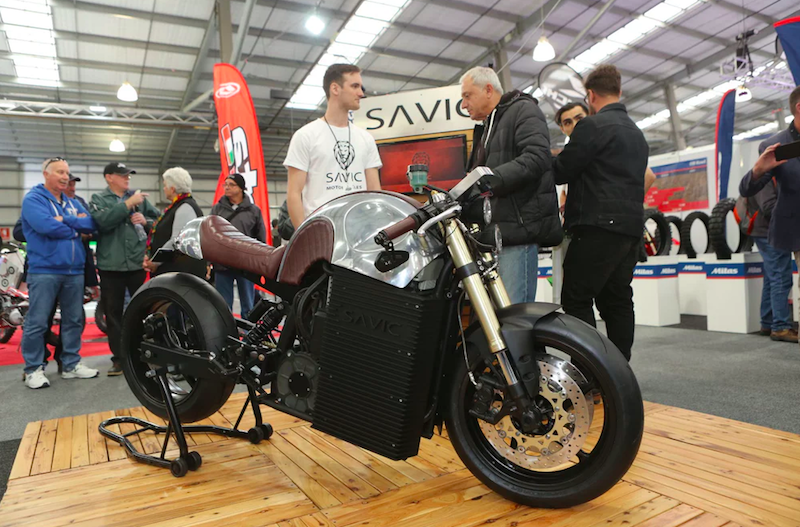
We recently spoke with Dennis Savic of Savic Motorcycles, the company behind the C-40 prototype seen here
When I recently spoke with Dennis Savic, founder of Savic Motorcycles, he explained to me that electric powertrains are still wildly expensive, even for large manufacturers because relatively few are being ordered/used, and the low volume leads to high prices. The good news is with so many companies popping up and technology rapidly improving, the prices for batteries and motors should start declining substantially not too far out from now.
The Emissions Factor
As we discussed in our recent Auto Bahn story, emissions regulations are becoming tighter and tighter, and it’s becoming harder and harder for manufacturers to find ways of meeting these stringent standards without greatly sacrificing performance. The most current engines will keep officials content for the next half-decade or so (at best), it won’t be too long until firms start putting more and more of their eggs in the EV basket, and once these companies start figuring this out, they’ll start making moves sooner than later to prepare.
A Look At The Hard Numbers
Zero Motorcycles sells up to 10,000 bikes per year and has a projected growth rate of 40% annually. That’s right on track with the in-depth analysis that lead to market research firm TechNavio’s projections that the electric moto sector is poised to grow by approximately 42% by the end of 2020. By 2025 the market is expected to have nearly doubled from where it stands today.
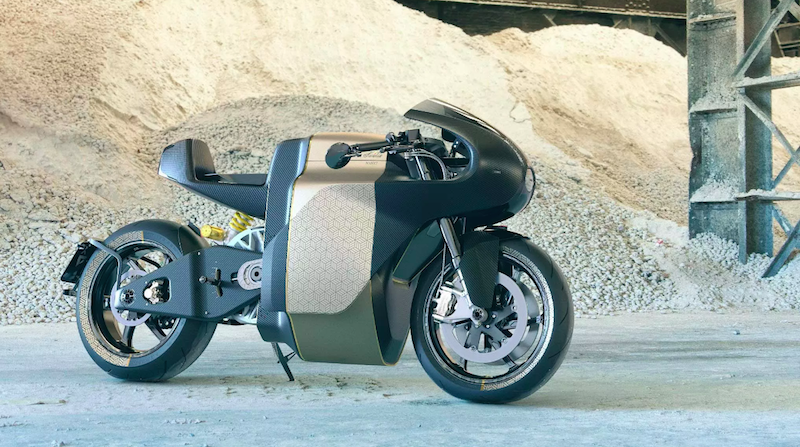
One of the best looking ebikes to debut in the last year was the Saroléa Manx7 cafe racer
Reasons Behind The Numbers
Ease of use is a vital aspect of understanding the appeal of ebikes. As far as maintainence goes, there’s little more than tightening and lubing the chain (if there even is a chain), and putting air in the tires. No more valve adjustments, oil changes, etc. Just unplug, twist the throttle and go, which brings us to our next point; the twist-and-go aspect.
Unlike traditional motorcycles, electric powertrains don’t necessitate the use of gears or a clutch. It’s as simple as twisting the throttle and you’re off, not unlike common scooters with CVT (constant variable) transmissions. This makes ebikes markedly less intimidating to a lot of new riders, which definitely helps with sales numbers. Plus, while not necessary, manufacturers are capable of giving electric bikes gears for riders who enjoy shifting through the gearbox — something Brammo offered.
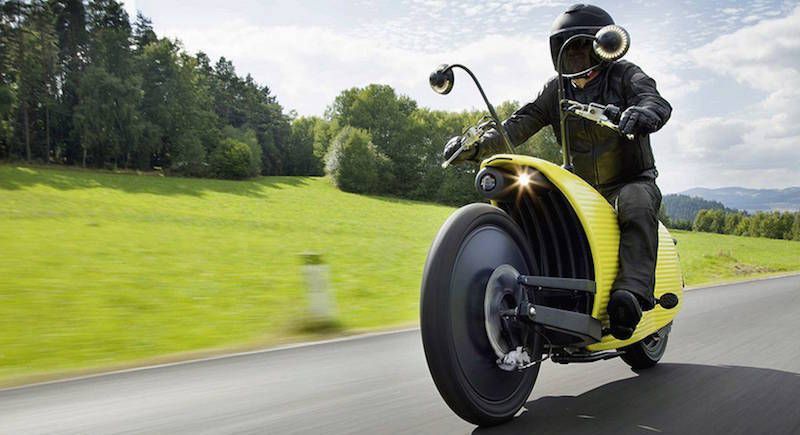
Until more recently electric motorcycles were seen as novelty bikes, the Johammer J1 didn't help with that
Just like with Toyota and Prius sales, electric bike makers are at least relying on some of their sales to be driven by environmentally motivated customers, as, whether or not most electric outfits promote their products’ green nature, the zero emissions factor is an undeniable benefit. Lastly, the current and upcoming younger generation of riders (and drivers) is more open to the idea of going electric than their parents were.
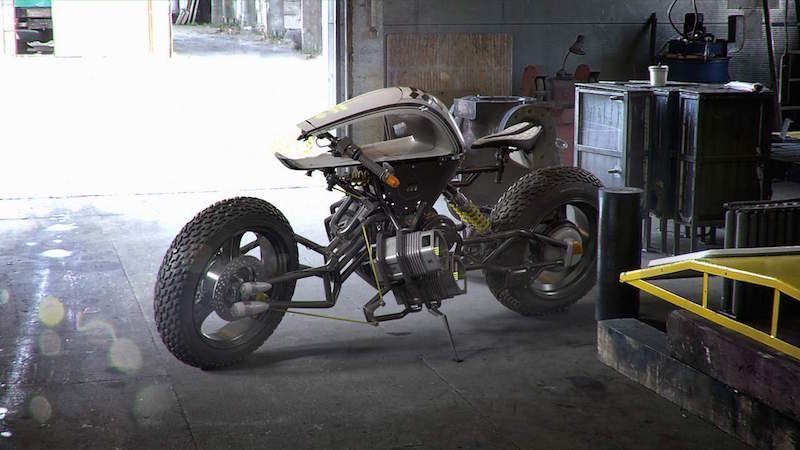
We even saw a number of awesome one-off ebikes this year like the SASUGA seen here
Why A Revolution
With electric motorcycles increasingly matching the performance of gas-powered bikes, electric powertrain costs coming down, a massive influx of electric startups, an overall increased acceptance of electric two-wheelers, increased environmental concerns, gobs of torque on the street, better and better charge ranges and decreased charge-times, major investments from big-name marques, electric motorcycles are not only here to stay, but they’re here to take on a bigger and bigger portion of the motorcycle market.
"Conventional" bikes have something that e-bikes won't ever have - engine noise, vibration and fuel smell. Car drivers can easily give this all up, but bike riders won't. It's part of our religion.
You missed Fonzarelli, they have been making E-Bikes and scooters in Australia for years.
bring back ALTA